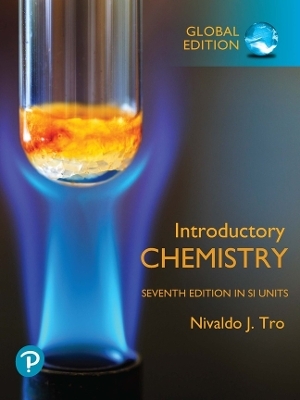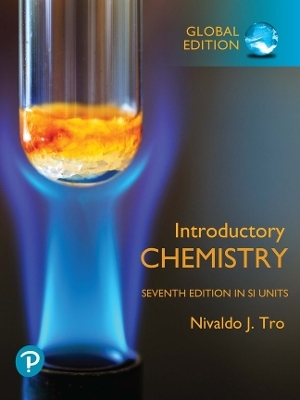
Surfaces and Interfaces of Biomimetic Superhydrophobic Materials
Wiley-VCH Verlag GmbH (Hersteller)
978-3-527-80672-0 (ISBN)
- Keine Verlagsinformationen verfügbar
- Artikel merken
Professor Zhiguang Guo received his PhD degree from Lanzhou Institute of Chemical Physics (LICP), Chinese Academy of Sciences (CAS) in 2007. After that, he joined Hubei University. From October 2007 to August 2008, he worked at University of Namur, Belgium, as a post-doctoral research fellow. From September 2008 to March 2011, he worked at the Funds of National Research Science, Belgium, as a "Charge de Researcher". During February 2009 to February 2010, he worked at the Department of Physics, University of Oxford, UK, as a visiting scholar. Currently, he is a full Professor at LICP financed by the "One Hundred Talented People" program of CAS and the "Excellent Youth Foundation" of National Natural Science Foundation of China. In 2014, he obtained the award of "Shizhu Wen" in Tribology, and in 2015 he obtained the National Natural Science Prize of China (Second Class) and in 2016, he obtained the "Outstanding Youth Award" of International Society of Bionic Engineering. Now, he is an associate editor of RSC Advances, and the editorial board member of Journal of Bionic Engineering and Chemistry Letters. To date, he has published more than 140 papers focusing on the surfaces and interfaces of superhydrophobic materials with more than 3000 times citations and H index 31. Dr Fuchao Yang received his Master degree from College of Physics and Electronic Engineering at Northwest Normal University in 2013. Since then he joined Prof. Zhiguang Guo's group at LICP to pursue his PhD degree. From July 2016, he is a lecture in Hubei University. His research interest is focused on the wetting behavior of superhydrophobic surfaces and fabricating surfaces with micro- and nano-structures applied for functional nanomaterials.
1. Introduction 2. Superhydrophobic surfaces from nature 2.1 Superhydrophobic plant surfaces in nature 2.2 Superhydrophobic surfaces of animals in nature 2.3 Behind and beyond superhydrophobicity: natural hierarchical structures 3. Advances in the theory of superhydrophobic surfaces and Interfaces 3.1 Basic theories: contact angle and Young's equation 3.2 Wenzel model: adaptability and limitations 3.3 Cassie-Baxter model: adaptability and limitations 3.4 Improved models 3.5 Cassie-Wenzel and Wenzel-Cassie transitions on superhydrophobic surfaces 4. Fabrications of non-coated Superhydrophobic Surfaces and Interfaces 4.1 Etching method 4.2 Lithography 4.3 Anodization 4.4 Laser processing 4.5 Electrodeposition 4.6 Hydrothermal method 4.7 Sol-gel process 4.8 Electrospinning 4.9 Others 5. Superhydrophobic nanocoatings: from materials to applications 5.1 Materials for nanocoatings 5.1.1 Inorganic materials 5.1.2 Organic materials 5.1.3 Inorganic-organic hybrid materials 5.2 Fabrication methods for nanocoatings 5.2.1 Sol-gel process 5.2.3 Chemical vapor deposition 5.2.4 Spray process 5.2.5 Electrospinning process 5.2.6 Electrodeposition 5.2.7 Solution immersion process 5.2.8 Other techniques 5.3 Biomimetic transparent and superhydrophobic coatings 5.3.1 Two competitive characters: transparency and superhydrophobicity 5.3.2 Various materials for transparent and superhydrophobic surfaces 5.3.3 Potential applications 6. Adhesion Behaviors on Superhydrophobic Surfaces and Interfaces 6.1 Liquid-solid adhesion of superhydrophobic surfaces 6.1.1 Surfaces with special adhesion in nature 6.1.2 Artificial superhydrophobic surfaces with special adhesion 6.1.3 Switchable liquid-solid adhesions on superhydrophobic surfaces 6.2 Adhesion of ice on superhydrophobic surfaces 6.2.1 Mechanism of ice crystallization 6.2.2 Anti- adhesion icing properties of superhydrophobic surfaces 6.3 Solid-solid adhesion of superhydrophobic surfaces 6.3.1 Protein adsorption on superhydrophobic surfaces 6.3.2 Cell adhesion on superhydrophobic surfaces 6.3.3 Bacterial adhesions on superhydrophobic surfaces 7. Smart biomimetic superhydrophobic materials with switchable wettability 7.1 pH-responsive wettable materials 7.2 Photo-induced self-cleaning properties 7.3 Solvent-responsive wettable materials 7.4 Magnetic control behavior of superhydrophobic microspheres 7.5 Other external stimulis 8. Biomimetic Superhydrophobic Materials applied for oil/water separation (I) 8.1 Metallic mesh-based materials 8.2 Fabric-based materials 8.3 Sponge and foam-based materials 8.4 Particles and powdered materials 8.5 Other bulk materials 8.6 Theories behind oil/water separation behaviour 9. Biomimetic Superhydrophobic Materials applied for oil/water separation (II) 9.1 The formation of water-and-oil emulsions 9.2 Modified Traditional Ceramic and Polymer Separation Membranes 9.3 Novel Polymer Membranes 9.3.1 In Situ Polymerization 9.3.2 Mussel-inspired Deposition 9.3.2 Phase Inversion Process 9.4 Nanomaterial-based Membranes 9.4.1 Carbon-based 9.4.2 Cellulose-based 9.5 Non-two-dimensional Separating Methods 10. Conclusion and outlook
| Erscheint lt. Verlag | 5.1.2018 |
|---|---|
| Verlagsort | Weinheim |
| Sprache | englisch |
| Maße | 150 x 250 mm |
| Gewicht | 666 g |
| Themenwelt | Naturwissenschaften ► Chemie |
| Naturwissenschaften ► Physik / Astronomie | |
| Technik ► Maschinenbau | |
| ISBN-10 | 3-527-80672-5 / 3527806725 |
| ISBN-13 | 978-3-527-80672-0 / 9783527806720 |
| Zustand | Neuware |
| Haben Sie eine Frage zum Produkt? |
aus dem Bereich


